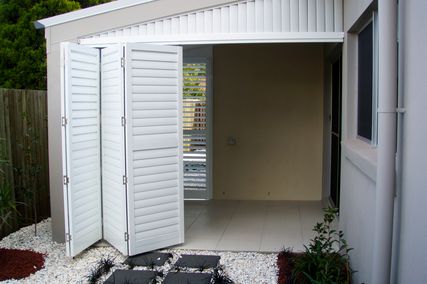For any practice to survive, difficult moments have to be resolved along the way. You can plan and plan, but the most difficult events usually come from left field – like the global financial crisis (GFC) of 2007 to 2009, which some people predicted, and the coronavirus pandemic, which no one did.
Early in my architectural career, I realized that I was interested in both the modern and the traditional, and determined that I would pursue several strands of architectural practice, alongside an interest in landscape design. These strands were new school buildings, quality residences and heritage conservation.
During the recession of the early 1990s, I found myself with a large contract to restore the Sydney Town Hall, and a seven-year involvement in an upgrade of the historic New Zealand Parliament Buildings – while one major commercial practice in Sydney had virtually no work. My pursuits may have been out of sync with the standard architectural attitudes and management of the time, but my various strands of practice ensured that if one strand was in decline, I could try another.
I’ve endeavoured here to recall several strategies and outcomes that helped me – and the practice – through difficult economic moments. Hopefully, my reminiscences may assist others in this moment.
Reduce your overheads
Consider how you can slim your practice without losing its essence. For example, could you share a studio workspace in order to minimize rent? This arrangement can also facilitate the sharing of office equipment and encourage a crossover of skills and expertise. Alternatively, might you move to a cheaper space, or devise an adequate studio at home? What else is peripheral and could be foregone?
Review your costs each month
Remember, there is one simple rule in business: the income must exceed the expenses. Check this every month – it’s a key management tool and critical in a recession. It will inform you of the need to adroitly increase income or reduce expenses.
Our accountant drew our attention to the absolute necessity for staff time sheets to be finalised on the last day of the month, enabling the prompt issue of invoices. With regular pursuit of outstanding fees, it made a significant difference to our bottom line. The time gap from paying staff to undertake work to receiving payment fell from more than eight weeks to less than four.
Find ways to collaborate at a distance
The recent lockdown has required people to work from home. This arrangement, which necessarily occurred in a hurry, is changing established concepts of architectural practice and now needs to be thought through more carefully.
Staff working from home may well reduce office overheads, but they miss out on many of the benefits of personal contact, team collaboration and unified productivity that are evident in the studio environment.
Promote your expertise
Design consultancies are required even in difficult times. Might you have a speciality that remains active even while the mainstream is in decline? For me, at the time of the GFC, this was heritage conservation, as some projects found themselves with approvals or certification requiring specific heritage advice. For other practices, it was disabled (or universal) access guidance, Australian standards and specification writing, or even swimming pool regulation and certification.
Think local, not global
With all travel abroad seriously curtailed for the near future, at least, it is essential to think local, not international. Commissions won only with a big-name overseas participant will not be feasible for some time.
It’s important to draw your special skills to the attention of relevant local clients. As an industry, we need to stress publicly that we have an excellent talent base in all design fields within Australia. Take a moment to identify and connect with local people whose abilities are complementary to yours.
Engage with the broader community
Involvement with community organizations and local politics can provide an understanding of what projects are being considered and who is putting them forward. Once you are seen to be an informed participant in public forums, your advocacy skills will be noted, often leading to new opportunities.
As a member of my local council’s urban design advisory committee, I was part of a small group that met with applicants to discuss design issues and to give their projects guidance and direction along lines that were generally endorsed by the council. Through this process, I came into contact with property owners and developers, relevant council staff and the council generally. Having a good relationship with these individuals is always an advantage.
Focus on relationships
Focus on your best clients and seek to strengthen the relationship. Repeat clients are usually the best clients, as you have formed mutual understandings through a first project. In my experience, many individuals with available capital await downturns to obtain “value for money” in their projects. This might be the climate they’ve been waiting for.
Recognize the consultants who have served you well and emphasize their importance to you. Aim to develop a sense of mutual loyalty with reliable engineers, planners, landscape architects, builders, garden contractors and other allies. We can all help each other – and, in particular, we can refer clients to each other.
Reassure and compliment your key colleagues in the office and do what you can to keep suitable work in place for them. Ensure that some aspects of office life are memorable and enjoyable. Take time to share special architectural insights with the group, hold a simple in-house lunch or picnic from time to time, encourage a sense of camaraderie.
Grasp new opportunities
The public health considerations of the coronavirus are likely to lead to the redesign of public places and spaces. In the future, it may be deemed unacceptable or unwise to touch common surfaces or to physically exchange documents or currency. Contact-free transactions will involve the redesign of many spaces such as airport terminals, hospitals and shopping centres.
In conclusion
In her book Phosphorescence (2020), Julia Baird – a thoughtful commentator and writer – talks of the people with positive views who uplift and enhance your life, and of the others, who “take you to the basement.” Always favour those who lift your spirit, recognize your good qualities, support your ventures and consistently deliver.
Aim to forgo the rest!
















